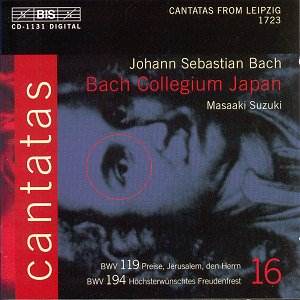 Composer: Peter Lieberson
Composer: Peter Lieberson
Works: Drala (1986) for orchestra; Concerto for Four Groups of Instruments (1972-73); Accordance (1975-76) for Eight Instruments; Three Songs (1981) for Soprano and Chamber Orchestra; Ziji (1987) for Clarinet, Horn, String Trio, and Piano; Raising the Gaze (1988) for Seven Instruments; Fire from “The Five Great Elements” (1994-95) for Large Orchestra; Free and Easy Wanderer (1998) for Chamber Orchestra
Performers: The Cleveland Orchestra; ASKO Ensemble; London Sinfonietta; Rosemary Hardy (soprano)
Recording: Den Haag, Dr. Anton Philipszall, 12/1994 (Accordance, Raising); Cleveland, Severance Hall, 11/1995 (Drala) and 11/1996 (Fire); Amsterdam, Waalse Kerk, 1/1997 (Concerto, Songs, Ziji); London, Henry Wood Hall, 8/1998 (Wanderer)
Label: Deutsche Grammophon 20/21 457 606-2 [67:37]
Peter Lieberson’s oeuvre, marked by a profound engagement with both contemporary techniques and Eastern philosophical themes, is elegantly showcased in this anthology of works spanning over two decades. The selected pieces reveal a composer deeply invested in exploring the boundaries of sonority and form, underpinned by his journey from rigorous twelve-tone methodology to a more expansive harmonic language. The collection is anchored by “Drala,” perhaps Lieberson’s most recognized composition, which not only exemplifies his unique voice but also offers a glimpse into his spiritual influences drawn from Tibetan Buddhism.
Opening with “Drala,” the listener is immediately enveloped by the ethereal quality of the piece’s Invocation. Knussen’s observations about its sheer beauty resonate strongly; the lush orchestration and shimmering harmonies create a meditative soundscape that invites contemplative engagement. The Cleveland Orchestra under Knussen’s direction performs with remarkable precision, bringing forth the work’s intricate textures. Each of the four movements unfolds seamlessly, with the dreamlike chords in the Invocation serving as a thematic anchor. The orchestra’s nuanced dynamics, particularly in the delicate passages, highlight Lieberson’s deft orchestration, allowing the listener to appreciate the interplay of timbres that characterizes much of his later work.
The “Concerto for Four Groups of Instruments” presents an interesting contrast, revealing Lieberson’s earlier, more rigorous approach to twelve-tone composition. Here, the ASKO Ensemble navigates the complex interplay between the instrumental groups with commendable clarity, although the pointillist style may feel somewhat austere compared to the lushness of “Drala.” Yet, it is this very juxtaposition that illustrates Lieberson’s evolution as a composer. The structural rigor of this work serves to illuminate his subsequent shift towards a warmer sonic palette, evident in “Accordance” and “Free and Easy Wanderer,” which explore harmonic stations as points of departure and return. In these pieces, the London Sinfonietta’s performance captures the essence of Lieberson’s pursuit of a more inviting sound world, replete with resonances that linger long after the final notes have faded.
The technical aspects of the performances across the disc are uniformly high, with each ensemble demonstrating an acute awareness of the musical narrative. Rosemary Hardy’s contributions in “Three Songs” stand out for their lyrical elegance and emotional depth. Particularly in the opening song, “Listen and Hear,” her voice weaves through Lieberson’s intricate lines with a haunting clarity that complements the instrumental texture beautifully. The engineering quality of this recording is also commendable; the balance between orchestral forces and soloists is expertly managed, ensuring that the subtleties of Lieberson’s writing are always at the forefront.
Lieberson’s “Fire,” the only complete orchestral piece from his planned cycle on the elements, is a dazzling display of orchestral color and energy. It feels less like a fanfare and more like a concentrated burst of creative energy, showcasing the virtuosity of the Cleveland Orchestra. The work’s structure, with its contrasting sections leading to a calmer center, exemplifies Lieberson’s ability to craft compelling musical narratives that resonate with both intellect and emotion.
This anthology serves as an essential collection for those seeking to understand the breadth of Lieberson’s artistic journey. The Deutsche Grammophon 20/21 series continues to impress with its commitment to contemporary music, offering not only a superb listening experience but also richly informative booklet notes. Lieberson’s works, in the hands of these accomplished performers, are presented in a manner that is both engaging and enlightening, making this disc a vital contribution to the repertoire of late 20th-century music. Regular returns to this collection are not merely recommended; they are imperative for a fuller appreciation of a composer who has adeptly woven complexity with profound beauty.



